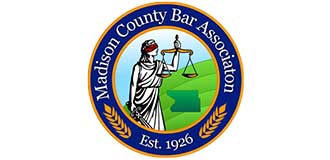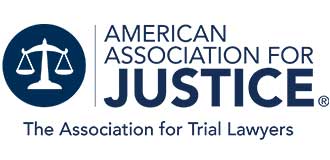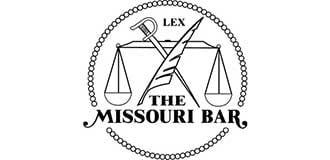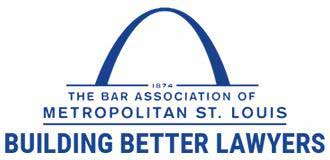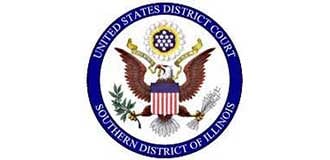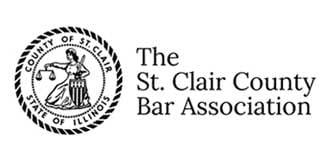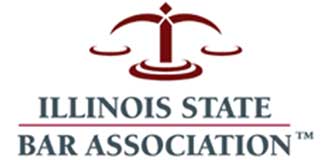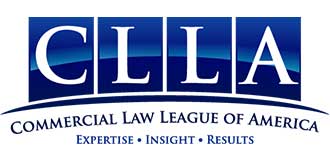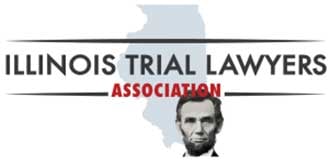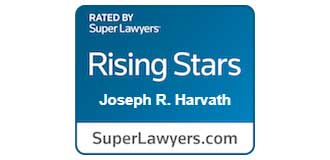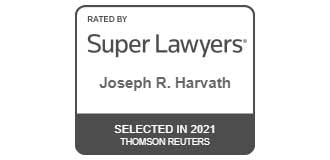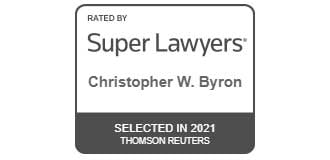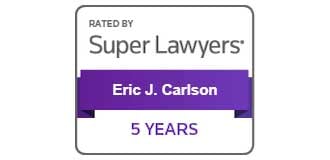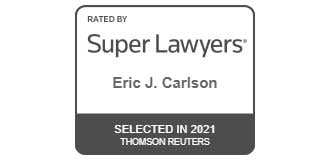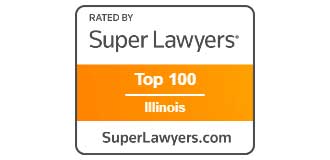by John T. Walsh and Christopher J. Petri
It is easy to come to the conclusion that the following formula is true: broken product + injured plaintiff = plaintiff’s verdict. In other words, in a product liability action, a broken product combined with an injured plaintiff will inevitably result in a plaintiff’s verdict. However, that reasoning overlooks the cornerstone of product liability – a defective product. Many practitioners assume that broken products are necessarily defective they aren’t.
In framing the issue, it helps to begin with a definition of a broken product. A “broken product” is one that no longer retains its aesthetic integrity. Common examples include products that are cracked or separated into pieces and products that are worn or eroded. Obviously, there are cases where such products are defective. For example, a new product that comes apart during an intended use and causes injury presents a difficult case to defend. On the other hand, older products that break after some us or products that have an aesthetic flaw (such as a bubble in a casting) from the time of manufacture, but fail only after excessive wear and tear, present litigation that can be won.
In short, the key to winning a broken product case is threefold. Defense counsel must:(1) understand the nuances of “defect”; (2) understand early in the case how and why the product failed; and (3) anticipate the plaintiff’s likely reaction to your defense, and structure the defense to take advantage of this reaction.
What is a “Defect”?
The allure of broken product cases is the assumption that a break must indicate a defect. However, an examination of the law shows that such an assumption is false.
The source of product liability law in nearly every jurisdiction is Section 402A of the Restatement (Second) of Torts. See also, Restatement (Third) of Torts: Products Liability, which does not change the fundamental essence of Section 402A. Many states have enacted their own versions of Section 402A, and case law modifies Section 402A in a number of slightly different ways in each state, but few states depart significantly from its basic tenets. Section 402A provides:
Special Liability of Seller of Product for Physical Harm to User or Consumer
(1) One who sells any product in a defective condition unreasonably dangerous to the user or consumer or to his property is subject to liability for physical harm thereby caused to the ultimate user or consumer, or to his property if:
(a) the seller is engaged in the business of selling such a product, and
(b) it is expected to and does reach the user or consumer without substantial change in the condition in which it is sold.
(2) The rule stated in Subsection (1) applies although
(a) the seller has exercised all possible care in the preparation and sale of his product, and
(b) the user or consumer has not bought the product from or entered into any contractual relation with the seller.
The most important language of Section 402A with respect to broken products are its requirements that: (1) the product reach the consumer “without substantial change from the condition in which it is sold”; and (2) the defect cause the injury (“harm thereby caused to the ultimate user or consumer”). These two provisions provide the main bases for a defense victory in a broken product case. A product that is worn, cracked, severed, or otherwise aesthetically flawed (and thereby potentially more dangerous) on the day of the injury is not necessarily defective, because it may not be in the same condition as it was when it left the control of the manufacturer. Likewise, an imperfection that does not cause harm provides no basis for liability.
The opinion in Glass v. Allis-Chalmers Corp., 618 F.Supp. 314 (E.D.Mo. 1985), aff’d, 789 F.2d 612 (8th Cir. 1986), presents a good example of the proper application of Section 402A. In Glass, the plaintiff was injured when he slipped on the deck of a grain harvesting combine. As originally manufactured, the combine had safety non-skid stripping on the deck. Through use, the non-skid stripping had worn off, rendering the deck slightly slick and susceptible to causing injury. The court granted summary judgment in favor of the defendant, holding “it is clear that as time goes by and a product is used, it or its parts may simply wear out. To hold the manufacturer or seller liable for unavoidable accidents or ordinary wear and tear would be to place the manufacturer or seller in the place of an insurer.” 618 F.Supp. at 316. The Glass court found it significant that the combine had been in service for four years, and specifically noted that the plaintiff had presented no evidence as to how the combine stripping became worn. Id.
A similar scenario was at issue in Wojnarowski v. Furnas Electric Co., No. 1-98-0081 (Ill. App. 1999). In Wojnarowski, the plaintiff was injured by a punch press when a delay switch failed to operate. The evidence showed that delay switches eventually burn out after approximately one million cycles. The evidence also showed that it was not feasible to make a delay switch that would not eventually burn out. Maintenance programs were available to test delay switches to determine whether they had worn to a point where failure was probable. The plaintiff’s employer, however, employed no testing system, instead relying on the operator to smell the acrid odor emitted when the delay switch burned out. The court rejected the plaintiff’s theory that the manufacturer of the switch should have warned that the delay switch could burn out, as it was known to all that the delay switch would burn out and additional warning would not have served any purpose. (The Wojnarowski opinion was withdrawn on July 13, 1999, and under local court rule, it has no precedential value. See 185 Ill.2d 670, 720 N.E.2d 1107. its facts are illustrative, however, and defense lawyers can learn from it.)
Courts have used similar reasoning with regard to products that are severed or cracked. For example, in Porter v. Pfizer Hospital Products Group, Inc., 783 F.Supp. 1466, 1472-73, 1475 (DMaine 1992), an acetabular cup split during the plaintiff’s hip surgery. The plaintiff sued for damages resulting from his surgery, arguing that the cup was defective because its liner separated from its backing. However, the plaintiff presented no evidence as to a defect in the product, i.e. no evidence regarding the utility and the risks of the product, resulting in a judgment as a matter of law against a plaintiff. Id. at 1474.
These decisions can be contrasted with Magnuson v. Kelsey-Hayes Co., 844 S. W. 2d 448 (Mo.App. 1992), where the plaintiff was injured by a wheel and tire that broke loose from a passing pickup truck. The evidence showed that the wheel had seen heavy use over approximately 11 years. The plaintiff, however, produced evidence that the microstructure of the metal of the wheel was flawed in two manners. First, it contained carbide films, making the steel brittle. Secondly, due to improper cooling during its formation, the steel of the wheel was too thin. Following a jury verdict in favor of the plaintiff, the Missouri Court of Appeals held that the above evidence made a submissible case for the plaintiff because it showed a defect that existed at the time the product left the hands of the manufacturer.
These decisions illustrate a valuable, but often overlooked, lesson. If the plaintiff shows that a product wore, cracked, or severed during ordinary wear and tear, he has not satisfied his burden. Instead, a plaintiff must show that there was a flaw in the product, at the time it left the seller’s control, that made the product unable to handle ordinary wear and tear (e.g., the especially thin steel in the wheel at issue in Magnuson). Defendants can make it difficult for plaintiffs to overcome this burden by producing evidence of blueprints, shop drawings, photographs, and the like which show no signs of the product’s inability to handle ordinary wear and tear. Such evidence usually exists, even for the oldest products.
Causation
In product liability terms, causation is the difference between imperfect products and “defective” ones. Liability only arises when the imperfection causes injury. Admittedly, as in other products cases, causation in a broken product case often comes down to a battle of the experts. See, e.g, Bell v. T.R. Miller Mill Co., 768 So.2d 953, 957 (Ala. 2000)(in case of broken telephone pole, holding that plaintiff’s expert’s testimony regarding causation was sufficient to overcome summary judgment and stating that the question of proximate cause is almost always a question for the jury); Schooley v. Ingersoll Rand, Inc., 631 N.E. 2d 932, 937 (Ind.App. 1994) (holding that expert’s testimony regarding whether broken hook caused plaintiff’s injury was sufficient to overcome judgment as a matter of law).
However, defendants win on causation as a matter of law in some cases. For example, given that the action involves a broken product, plaintiffs will sometimes rely only on circumstantial evidence, including the fact of the break, to prove both defect and causation. When this circumstantial evidence is put up against defendant’s expert evidence on causation, the court will sometimes grant judgment as a matter of law on causation, particularly when conflicts arise within the circumstantial evidence. See, e.g., Kaplon v Howmedica, Inc. 83 F.3d 263, 267-68 (8th Cir. 1996) (applying Arkansas law).
Moreover, the element of causation offers a fruitful defense at trial in a broken product case because the broken product often indicates misuse or negligence by the plaintiff or another party, allowing for a supervening cause argument. For example, as discussed above in Porter v. Pfizer Hospital Products Group, an acetabular cup broke during plaintiff’s hip surgery. The plaintiff sued for damages resulting from his surgery, arguing that the cup was defective because its liner separated from its backing. However, the court accepted the defendant’s argument that the cup broke due to abnormal surgical technique and misdirected force applied when the cup was implanted. Id. at 1472-73.
Typical Plaintiffs’ Strategies
Because the failure of products from wear and tear is common and because mere proof of failure during ordinary wear and tear is insufficient to carry the day on a product liability case, plaintiffs can present certain theories that are custom made for a broken product case. Generally, these theories are:
1) The product should have been designed to last longer, i.e., a consumer would expect a longer useful life;
2) The product should be designed to “fail safe,” i.e., fail in a manner that does not create a hazard;
3) The product should have a warning that it will wear out, along with information concerning the indicia of wear and hazards of using a worn product; and
4) The product should be designed to prevent the user from prolonging its life with replacement parts, as such prolonging is unsafe.
Consumer expectations for a longer useful life
The first of these four theories can be meritorious. However, in a risk-utility jurisdiction, the plaintiff should have to identity some defect in the product that caused the useful life of the product to be shorter than normal, i.e., the plaintiff should not be able to make his case merely by proving that the product did not last as long as normal. For example, in Haudrich v. Howmedica, Inc., 169 Ill.2d 525, 662 N.E.2d 1248, 1251, 1255-56 (1996), the plaintiff’s knee implant wore out after two-and-a-half-years, when the expected useful life of such an implant was ten to twelve years. The plaintiff also presented evidence that the implant did not last as long as expected because it was heated improperly during the manufacturing process. The court held that the evidence was sufficient to support a plaintiff’s verdict. 662 N.E. 2d at 1256.
Some jurisdictions go even further, holding that the plaintiff need not prove (and the jury may infer) defect, if plaintiff can show that: (1) the product failed in a time or manner that it would not be expected to fail in through normal wear and tear; (2) he did not misuse the product; and (3) no third force or secondary cause (e.g., the mishandling of the product by a third party) was present. See, e.g., Rizzo v. Corning Inc., 105 F.3d 338, 340 (7th Cir. 1997) (applying Illinois law). Essentially, this “res ipsa loquitur” product liability theory is not much different from a consumer’s expectations test. If the plaintiff can show that the product did not last as long as an ordinary consumer would expect (i.e., the product failed in a time or manner it would not be expected to through normal wear and tear), and no evidence of other causes is found, he has carried his burden. Jurisdictions that recognize the res ipsa test (as well as jurisdictions recognizing a pure consumer’s expectation test) essentially allow the consumer to avoid holdings such as Glass and Wojnarowski, which force the plaintiff to show a defect, at least when the product did not hold up to normal wear and tear.
While states that recognize this ersatz res ipsa theory make it easier on plaintiffs, the road to victory is not without peril. Showing that the product failed before the end of its expected life and showing the absence of misuse may be very difficult for a plaintiff. As discussed below, an aggressive defense may trap plaintiff into positions that put proof of these elements beyond grasp.
Fail-safe protections
The “fail-safe” cases have also produced mixed results. Theoretically, the key issue should be whether the utility of the addition of a fail-safe mechanism (or the enhancement of an already present fail-safe mechanism) would have been greater than its risks and costs. Thus, one would expect that these cases would almost always boil down to a battle of the experts. See, e.g., Wyller v. Fairchild Hiller Corp., 503 F.2d 506, 508 (9th Cir. 1974) (holding that the plaintiff made a submissible case when he presented, among other things, expert testimony of defect in fail-safe mechanism of helicopter). Some courts have even gone so far as to allow the plaintiff to reach the jury without direct proof. See, e.g., Cody v. Marcel Electric Co., 71 Mich.App. 714, 248 N.W.2d 636, 666 (1976) (holding that, even though no direct proof of negligence was presented with regard to fail-safe mechanism, plaintiff made a submissible case).
However, defendants should be aware of certain themes that are prevalent in these cases. First, the courts are skeptical when the plaintiff alleges that the product should have had a second, or “back-up” fail-safe mechanism to ensure safety if the fail-safe mechanism already on the product failed or was misused. For example, in Abdul-Warith v. Arthur G. Mckee & Co., 488 F.Supp. 306 (E.D.Pa. 1980), aff’d, 642 F.2d 440 (3d Cir. 1981), a guard plate on a blast furnace rotted out, resulting in an injury to plaintiff’s hand. Plaintiff sued the manufacturer of the furnace alleging, among other things, that the furnace was defective for failure to have a back-up safety device in case the guard plate failed. The court rejected this theory of defect, stating “[i]t would appear that the failure to incorporate an alternative safety device could constitute a design defect only where the product, even with a functioning primary safety system, would nevertheless be unreasonably dangerous.” 488 F.Supp. at 314.
The opinion in Kroon v. Beech Aircraft Corp., 628 F.2d 891 (5th Cir. 1980), illustrates similar hesitancy by courts to accept the additional fail-safe mechanism argument. An airplane gust lock mechanism (which is designed to prevent damage to an airplane’s control system in heavy winds) was left in the engaged position during takeoff. The court, rather than addressing the defect question, held as a matter of law that the pilot’s negligence / misuse by failing to check for the disengagement of the gust lock before takeoff was the proximate cause of the accident. 628 F.2d at 893-94.
Defendants should also note that courts have repeatedly stated that manufacturers are under no duty to design products that are fail-safe. See, e.g., Stuckey v. Young Exploration Co., 586 P.2d. 726, 731 (Okla. 1978); Hagan v. EZ Manufacturing Co., 674 F.2d 1047, 1051 (5th Cir. 1982); Lovelace v. Ametek, Inc., 111 App.Div. 2d 953, 955, 490 N.Y.S.2d 49 (1985); and Knox v. Delta International Machinery Corp., 554 So.2d 6,7 (Fla.App. 1989). These decisions are not directly on point because the courts do not state that there is no duty to add mechanisms that make the product fail in a safe way (as discussed above). Instead, the courts are stating that there is no duty to make a product that is “safe from failing” under all circumstances. These cases typically contain an element of misuse or other supervening causes, and the courts usually make the fail-safe statement to rebut the notion that regardless of how the product is used or abused, it must be safe. See Stuckey, 586 P.2d at 731 (truck at issue had twice been modified and overloaded); Knox, 554 So.2d at 7 (safety guard had been removed from machine at issue). Such a requirement would obviously impose too great a burden on manufacturers.
Although not directly on point, the appellate decisions listed above demonstrate that courts are mindful of the costs entailed in making products safe under every circumstance (whether it be from misuse or from wear and tear). Citation to such cases can best be used in conjunction with an argument that it was simply too expensive to make a product that wore out (or broke) in a safe manner.
Finally, winning a fail-safe argument may be as simple as winning the battle of semantics. If the defense can couch the argument in terms of making the product safe from failing, the defendant should win, as no courts hold that products must perform forever without fail. Conversely, defendants must direct the argument away from the notion that the product must fail in a safe manner because failure is always known and, in some instances at least (e.g., known or common types of failures with known or common dangers), may trigger a duty to warn or otherwise mitigate the dangers of failure.
The fail-safe argument has more merit, however, in specific types of negligence actions. Some government and industry standards require that certain products fail safe under certain conditions. If a product does not meet these standards, the manufacturer may well have been negligent. The burden of complying with known industry and government standards, however, is far less than the strict liability imposed by Section 402a of the Second Restatement. Even in the absence of an articulated standard, if a manufacturer has actual knowledge that its products are failing in a particular and dangerous way, it may have the duty to modify future products to avoid this accident. Once again, this is not a particularly heavy burden and should only affect new products, rather than old products in the market place.
Warning about wear and tear
The law is clear in nearly every state that one need not warn a user of an obvious danger. This general principle of law has been applied specifically to relieve defendants of liability for failure to warn of ordinary wear and tear. For example, in Fluidmaster, Inc. v. Severinsen, 238 Ga.App. 755, 520 S.E. 2d 253 (1999), the plaintiff’s toilet valve wore out, resulting in water damage to his house. He brought a failure to warn claim, specifically alleging that the defendant should have warned of the risk that the valve would wear out. The court rejected the claim, holding “it is obvious that internal component parts of [the] device… wear out over time.” 520 S.E. 2d at 255. Thus, defendant had no duty to warn.
The Fluidmaster reasoning, however, applies only to obvious risks. A seller could be liable under strict liability and/or negligence if it fails to warn of a non-obvious risk or non-obvious wear. Such non-obvious risks may become known to the seller after experience with the product in the field. For example, in Hooker v. Super Products Corp., 751 So.2d 889 (La.App. 1999), internal documents from the defendant hose manufacturer showed that the defendant knew that after normal wear and tear, consumers would attempt to repair or replace the hoses. The evidence also showed that defendant knew that only certain replacement hoses and replacement parts were adequate for the repair and that certain risks (e.g., high pressure) were involved in repair testing. The court held that defendant had a duty to warn of the risks, and was liable for failure to warn. Id. at 907.
Preventing the prolonging of product life by consumers
The final theory – failure to design the product to protect against attempts to extend it beyond its useful life – should fail because of the “substantial change” doctrine discussed above. However, unlike the wear and tear cases where the product is “substantially changed” because of the wear and tear itself, the substantial change in these cases usually comes from the consumer. In other words, in attempting to extend the useful life of the product, the consumer generally modifies the product. For example, in Wolf v. Stanley Works, 757 So.2d 316, 318-19 (Miss.App. 2000), the sensor on defendant’s electric door had worn out. The store where the door was installed replaced the sensor. The replacement sensor, which was not built by the defendant (the original door manufacturer), failed, injuring the plaintiff. Id. The court rejected plaintiff’s product inability claim, holding that the replacement sensor was a substantial change to the product, relieving defendant of liability. Id. at 320.
Investigating the Plaintiff’s Injury
Armed with knowledge of what the plaintiffs must prove and the manner in which they will try to prove it, defense counsel must prepare to meet these challenges. Unfortunately, defense lawyers usually start out in the hole. Plaintiffs can and should investigate their case before they file. The good ones do. The cause is far from hopeless, however. The defendant’s advantage is that it typically has better access to critical sources of proof regarding the product that are in its client’s own files. Further, defense counsel has often handled many cases in the particular industry or for a particular manufacturer, which aids in understanding the mechanism of plaintiff’s injury.
If the plaintiff’s lawyer is allowed to direct the case, he or she will drift through the theories discussed above and perhaps others, until he finds one which he believes will give the plaintiff the best shot at avoiding summary judgment and prevailing in front of the jury. If defense counsel can take control of the case, however, he or she may be able to direct the case towards a theory which the plaintiff cannot prove, and either obtain summary judgment or at least make victory at trial more likely.
To take control of the case, the defense must capitalize on its resources to regain the lead (in the case of a prepared plaintiff) or extend its lead (in the case of an unprepared plaintiff). Getting ahead of a plaintiff is essential if defense counsel hopes to obtain summary judgment or be well positioned for victory at trial. Taking control involves two parallel, but interrelated, tasks: (1) discovering the information in the hands of the plaintiff and third parties; and (2) investigating the clients’ own files.
The tools to investigate plaintiff’s case are simple and straightforward: (1) a product inspection; (2) interrogatories and document requests; (3) subpoenas to third parties such as medical providers, police departments, employers, and workers’ compensation insurers; and (4) a deposition of the plaintiff. It may be tempting to delay these steps to save costs or allow the case to develop. Usually, though, neither strategy is effective. The advantages of control make early aggressive discovery the best course in nearly every case.
Investigation be the defendant is an ongoing task. Initially, defense counsel needs a general overview of the product, its uses and known misuses, its development and specifications, and its claims history. For a defense counsel who has represented a particular defendant before, this information may already be in his hands. As the facts from plaintiff filter in through the discovery devices discussed above, defense counsel needs to communicate and interact with his or her contact at the defendant’s corporation to fine tune the search. This will be the most effective approach to finding the answers to specific issues raised by the individual facts of plaintiff’s injury.
Capitalizing on the Information Gathered
If defense counsel can accomplish the discovery necessary from the plaintiff early in the process, he or she can gain significant advantages. First, the plaintiff’s attorney often has not fully developed his or her theory of liability. Accordingly, plaintiff will not be able to coach the plaintiff or slant responses to favor the best theory. Even if plaintiff has picked a theory, plaintiff has done so based only on the facts known prior to filing. Plaintiff’s initial theory may not be the best theory after all the facts are known (e.g., plaintiff relies heavily on failure to warn, not knowing that a warning was provided and was painted over or removed).
In short, early discovery responses made before all the facts are known to the plaintiff may hamper the plaintiff’s ability to access the best theory of liability later. Likewise, plaintiff’s expert (if one has been retained) has probably taken a fairly broad approach to liability before being fully informed. If the plaintiff is locked into his or her story early, that expert will be forced to construct the theory of defect around the facts, rather than molding the facts to the theory. Along these lines, working towards an early disclosure and deposition of plaintiff’s expert can also be helpful.
Defense counsel should also be mindful of the pleadings. Plaintiff’s counsel will typically plead as broadly as the court will permit to retain the maximum flexibility during discovery. Good plaintiffs’ lawyers know bad surprises (from their point of view) can be found in the defendant’s files and in third-party hands. Because few uncertain areas remain in product liability law, the temptation is not to waste time on motion practice. The defendant’s lawyer should use motion practice to narrow plaintiff’s pleadings, however, if possible. The narrower the plaintiff’s theory of liability, the easier victory will be for the defendant. This process may be interactive and require multiple steps as facts are obtained from plaintiff and plaintiff’s expert through discovery. Court may not cooperate with this strategy and may permit broad pleading. To the extent a court will hold plaintiff to the basic rules of pleading, narrowing the pleadings can be very useful.
Closing Argument
One can’t win every broken product case. Undoubtedly, defects sometimes cause the product to break or wear down before it should. However, many broken products cases are winnable – superficially they embody the legal elements, but upon closer examination, they do not hold up. Plaintiffs have some advantages, including the first-hand knowledge on the breaking of the product, the ability to plead broadly, and human nature’s assumption that a broken product is defective and an injured plaintiff should be compensated.
Defense counsel can overcome these advantages, but must be prepared to point out with particularity the weakness of the plaintiff’s case. Defense counsel should not allow plaintiffs to linger on defect by continually citing the mere fact that the product was broken. Instead, he or she should use aggressive discovery tactics to force the plaintiff to articulate a plausible theory of defect early in the case.
It also seems to be “human nature” to allow the plaintiff to take the lead in a product liability action, as the burden of proof is on plaintiff. This is a strategy that saves money in the initial stages in litigation, but can often cost dearly in the later stages of litigation, but can often cost dearly in the later stages because opportunities have been lost to terminate the litigation early or force it into a posture where resolution in favor of the defendant is likely.


